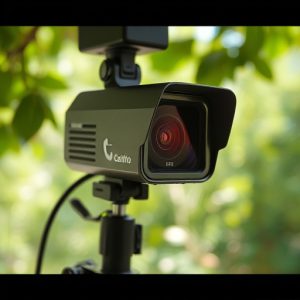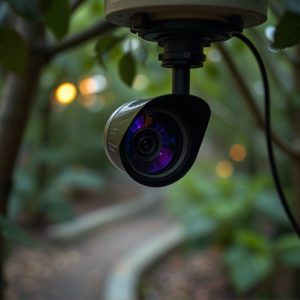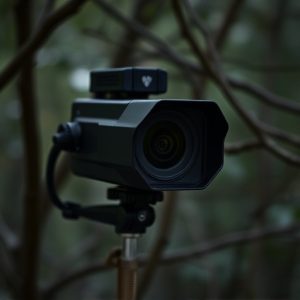Uncovering Hidden Cameras: Remote Viewing & Nanny Surveillance Techniques
Remote viewing technology revolutionizes modern nanny surveillance systems, offering discreet monito…….
Remote viewing technology revolutionizes modern nanny surveillance systems, offering discreet monitoring solutions for parents. By scanning electromagnetic radiation, these systems detect hidden cameras and audio recorders, ensuring privacy and security. Parents gain real-time observation capabilities from a distance using smartphones or tablets, providing peace of mind for children's safety in the digital era. Ethical considerations and legal boundaries must be navigated, balancing parental oversight with child privacy protection.
Hidden recording devices pose a significant privacy concern in today’s digital age. This article delves into innovative Remote Viewing Nanny Surveillance Systems—a cutting-edge technology for detecting these covert devices. We explore various signal scanning methods, from understanding the fundamentals of remote viewing to dissecting specific nanny surveillance systems. Furthermore, we discuss ethical considerations and legal aspects surrounding this technology while highlighting its potential as a privacy protector.
- Understanding Remote Viewing Technology
- Nanny Surveillance Systems: A Closer Look
- Detecting Hidden Recording Devices
- Ethical Considerations and Legal Aspects
Understanding Remote Viewing Technology
Remote viewing technology plays a pivotal role in modern nanny surveillance systems, offering parents a discreet and innovative way to monitor their children’s activities. This cutting-edge approach allows for real-time observation from a distance, eliminating the need for constant physical presence. By utilizing specialized equipment and techniques, remote viewing enables users to capture visual and auditory data from various locations without raising awareness among those being observed.
The process involves advanced signal scanning methods that detect and analyze electromagnetic radiation emitted by electronic devices. These systems can pinpoint and track hidden cameras or audio recorders, ensuring the integrity of privacy and security. With its ability to reveal unseen devices, remote viewing technology has become an indispensable tool for parents seeking peace of mind, providing them with a proactive measure to protect their children’s well-being in today’s digital landscape.
Nanny Surveillance Systems: A Closer Look
Nanny surveillance systems, often employing remote viewing capabilities, have emerged as a controversial yet powerful tool in the realm of home security and childcare monitoring. These advanced systems allow parents or caregivers to remotely observe and communicate with children, ensuring their safety while offering a sense of peace of mind. With real-time video and audio feeds accessible via smartphones or tablets, users can keep an eye on their little ones from anywhere, at any time.
The technology behind these systems is sophisticated yet discreet. Hidden cameras, strategically placed within homes, capture footage that can be streamed directly to a central device or cloud-based platform. This enables remote viewing, allowing caregivers to check in on children’s activities without being physically present. Such systems have become increasingly popular among working parents who seek reassurance and peace of mind while they’re away from home.
Detecting Hidden Recording Devices
Detecting hidden recording devices, such as those used in covert surveillance, requires specialized techniques and technology, especially when targeting sophisticated systems like Remote Viewing Nanny Surveillance Systems. One effective method involves utilizing advanced signal scanning tools that can penetrate walls and other obstacles to identify electromagnetic emissions. These devices emit signals that can be detected even if the camera or microphone is not actively recording, making it a powerful tool for security professionals.
By employing remote viewing techniques and sophisticated surveillance systems, experts can scan for these faint signals, pinpointing the location of hidden cameras or microphones. This process often includes using direction-finding equipment to triangulate the signal’s origin, ensuring accurate detection without raising unnecessary suspicion. Such methods are particularly valuable in scenarios where direct visual confirmation is difficult or impossible.
Ethical Considerations and Legal Aspects
When employing hidden recording device signal scanning methods, particularly in contexts like remote viewing or nanny surveillance systems, ethical considerations and legal aspects cannot be overlooked. Privacy is a paramount concern; capturing audio or video without explicit consent can infringe upon an individual’s right to privacy, leading to severe legal repercussions. In many jurisdictions, laws like the Video Surveillance Act or similar regulations govern the use of such systems, dictating clear guidelines on installation, notification requirements, and data retention.
Professionals and users must adhere to these legal frameworks to ensure ethical practices. For remote viewing systems, transparency is key; informing individuals that they are being recorded can help maintain trust and avoid potential legal issues. In the case of nanny surveillance, it’s essential to balance parental oversight with the child’s right to privacy, adhering to age-specific regulations. Understanding and respecting these ethical and legal boundaries are crucial for responsible use of hidden recording device signal scanning methods.
In an era where privacy is a paramount concern, understanding hidden recording devices and their detection methods has become crucial. This article has explored remote viewing technology, its application in nanny surveillance systems, and various techniques to uncover covert recordings. While these tools offer enhanced security, ethical considerations and legal aspects must be carefully navigated to ensure respect for personal boundaries and privacy rights. By staying informed about these advanced scanning methods, individuals can protect their spaces and maintain control over their personal information in today’s digital landscape.


